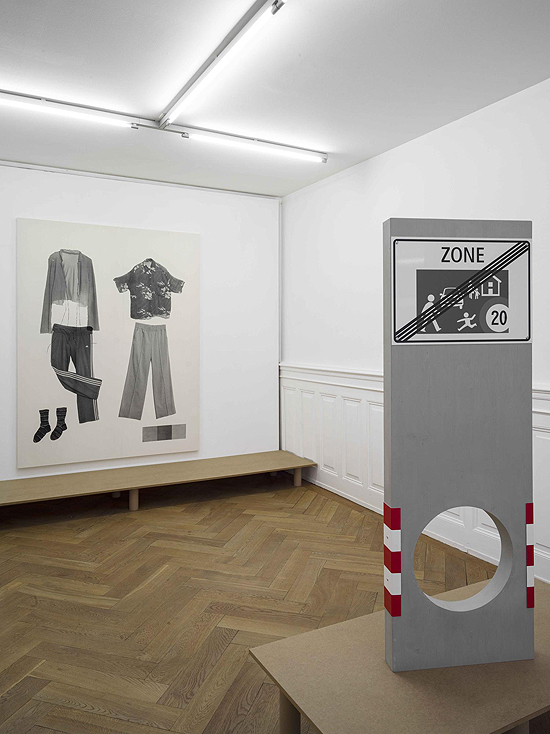Künstler:innen: Gritli Faulhaber, Brian O’Doherty, Mia Sanchez

In addition to the French philosopher and literary critic Roland Barthes (1915–1980), who lends the theme of “The Neutral” to this year’s festival Curated by in Vienna, our exhibition strives to remember another great person who is absent: the artist, writer, and most prominent theorist of the “white cube” Brian O’Doherty (1928–2022). We are presenting O’Doherty’s last novel The Crossdresser’s Secret (2014), the title character of which is Charles-Geneviève-Louis-Auguste-André-Thimothée d’Éon de Beaumont (1728–1810), a historical transsexual person better known as Chevalier d’Éon. Throughout O’Doherty’s life, he explored the concept of personas in his artistic work and used several alter egos, publishing books and exhibiting under their names. When he made his different personas public in 2011, he stressed that “the adopted names all did something” because they enabled him to “shrug off the cloak of selfhood” and to react to social issues “from another angle of perception.” Bringing together different voices was also decisive for his work as an art critic. For example, in 1967, O’Doherty was the editor of an issue of the Aspen Magazine, which was published in the form of different (printed) media inside a box. The box contained artistic, literary, musical, and scholarly contributions by such figures as George Kubler, Susan Sontag, Samuel Beckett, William S. Burroughs, Alain Robbe-Grillet, John Cage, Morton Feldman, Tony Smith, and Marcel Duchamp. O’Doherty also published Roland Barthes’ essay “The Death of the Author,” which is about the art of reading, in this issue, one year before it came out in the French original.
In addition to a showcase dedicated to O’Doherty, we are presenting works on canvas by two contemporary women artists: Mia Sanchez and Gritli Faulhaber. Sanchez addresses clothes as an expression of identity in large silkscreens on untreated canvases. She photographs each item of clothing individually, arranging the outfits assembled on the canvases as part of the printing process. Sanchez does not present the clothes of one person; instead, she addresses codes that convey a standardization and a sense of belonging, investigating how these codes are altered by the identical resolution of the images and the monochromatic print. The canvases display neutralized sample collections and cannot be assigned to certain groups, because they are defined by a common style (color, material, cut, use). Sanchez is interested in the figure of the consumer as well as the methods of how individuals can empower themselves in the daily life of existing societal structures. Faulhaber, on the other hand, calls herself an artist who researches painting as a métier and who acts as a painter. She reacts to the primarily male-dominated history of painting with strategies of appropriating pictures by women artists, addressing close relationships, while transforming and reevaluating traditional subjects. We are presenting a new group of Faulhaber’s small portraits based on pictures of women made by women artists. Each of her pictures is clearly contemporary and possibly a self-portrait. She bases her reproductions of the historical works on representations in her digital archive, so as to re-experience, understand, and revive these in a painterly and emotional sense. One quality of her works is that she leaves the picture ground that she sometimes treats with white oil paint visible in parts. These patches remind us of the materiality of painting but can also be an expression of an unfinished, deliberately open form. Although, like Sanchez, Faulhaber addresses questions of belonging, in her case this is in the social and economic context in which she lives and works as an artist.
This exhibition sketches a topography of seeing that promotes a comparative perception of the works and a discussion of artistic suggestions that explore the relationship between aesthetic and quotidian perception, between picture and reality.

Abbildungen: Ausstellungsansicht: Mia Sanchez Settings Kunsthaus Langenthal, 2023 Photos: Cedric Mussano
|




